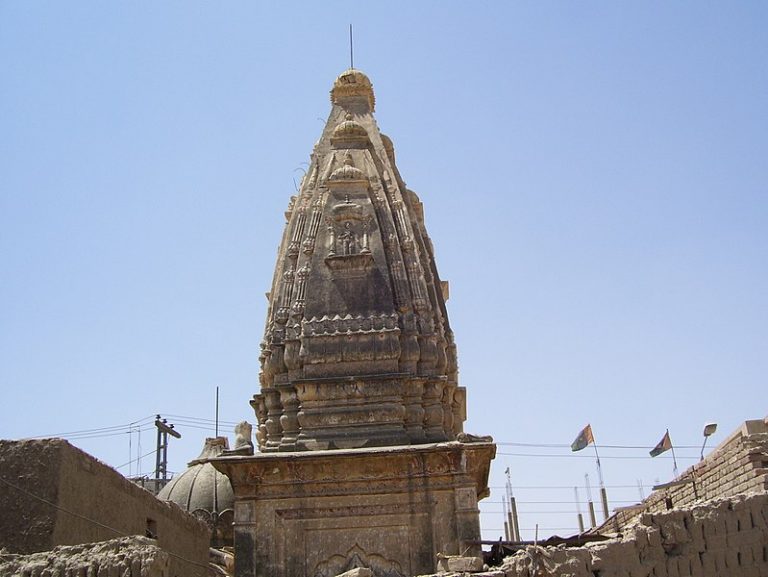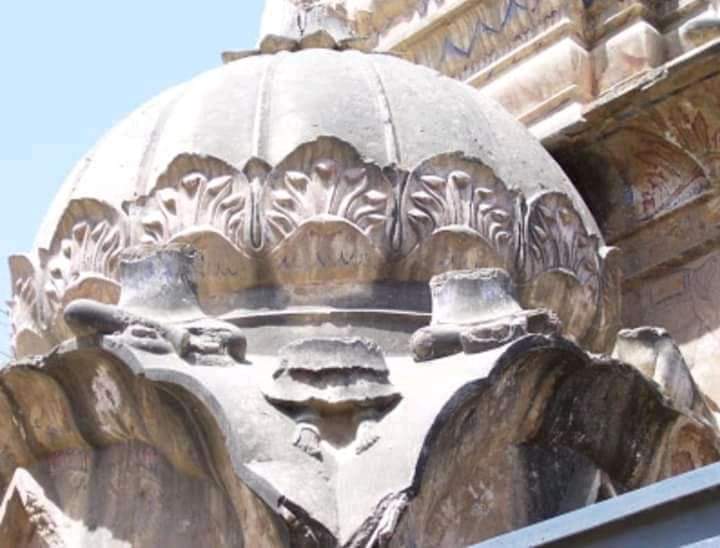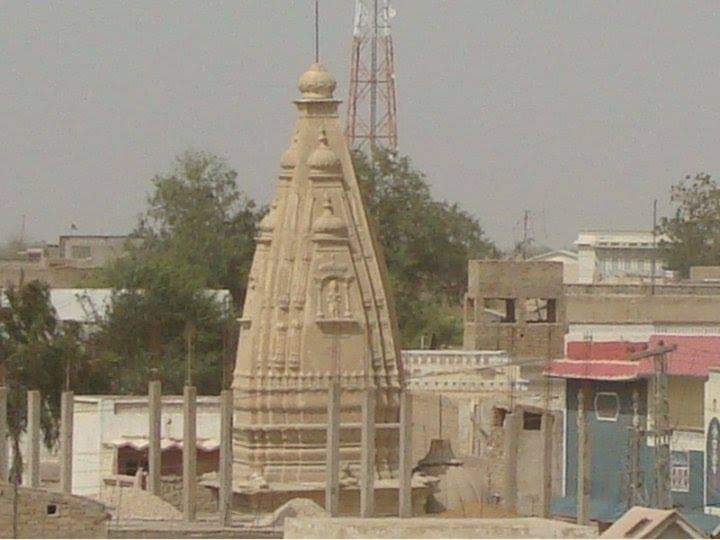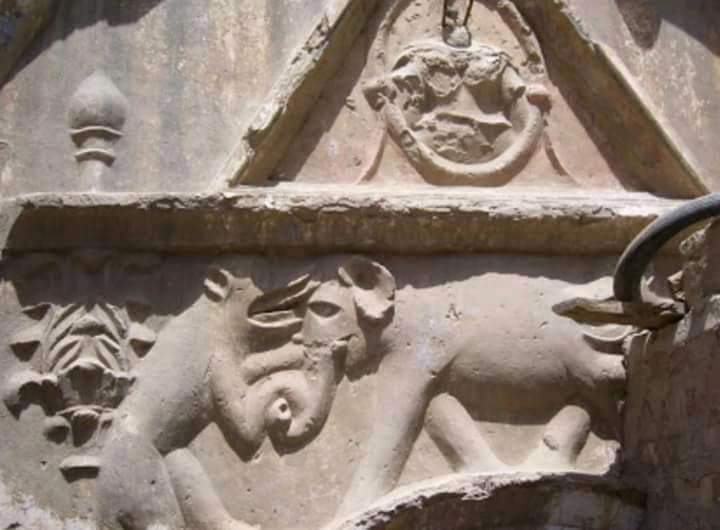
The Vani Dynasty is the first known sign of human civilization in the area, to the west of the Indus River. Like many ancient and modern civilizations, they had strong grounding in religion.
By Nikhil Chandwani
Perhaps Dadu could have been considered to be a fairly unremarkable city in recent times. However, recent investigations and developments have given researchers some idea as to the rich history of the area, and an insight into how it was a significant location thousands of years ago, paving the way to the city we see there today.
Dadu is a city in Pakistan, located within the Sindh province, which is situated in the south of the country. It is approximately 100 miles (160km) north-northwest of Pakistan’s Hyderabad. Indus River runs a short distance to its east and a sizable forest reserve is positioned nearby. The modern-day town serves a functional purpose, as well as being home to its residents. It acts as a distribution center to several major cities across Pakistan, with major road and rail links to Hyderabad, Karachi and Quetta.
It is easy for people to look at a modern-day town and not consider its origins. For a protracted period, there was little knowledge of Dadu and its history.
However, thorough research has uncovered fresh evidence of an ancient Hindu city-state centered in the city, known as The Vani Dynasty. The Vani Dynasty was in place for hundreds of years from the 3rd Century BCE, up until 1st Century BCE. Naturally, it had significant on the culture and future of the area, as the research has shown.
The Vani Dynasty is the first known sign of human civilization in the area, to the west of the Indus River. Like many ancient and modern civilizations, they had strong grounding in religion. Groundwork has revealed that several temples dedicated to Hindu Gods – notably Shiva and Krishna – were constructed in the city by the dynasty. There is some evidence that parents at the time gave their children Lord Krishna names, further solidifying the suggestion of Hindu influence.
 Notably, music played an important part in the lives of ordinary people living under The Vani Dynasty. It appears that each family had at least one musician within it, and that songs praising the Hindu God Shiva were commonplace.
Notably, music played an important part in the lives of ordinary people living under The Vani Dynasty. It appears that each family had at least one musician within it, and that songs praising the Hindu God Shiva were commonplace.
Every civilization is built on its food supply and trading capability. The Vani Dynasty did not differ from this. They grew rice, wheat, cotton and sugarcane, made possible with the Indus River providing a local water source. Such ability to grow produce enabled them to trade with neighboring kingdoms and city-states. When possible, they maintained direct trade relations with The Roman Empire. Given the behemoth size of the Roman Empire, food and supplies were at a premium for them.
The Romans purchased wheat, rice, cotton and cloth from Dadu. It is likely that this gave Sindhi-Hindus their reputation as traders. In return for the goods provided to them, the Romans provided gold coins. Auereus, a Roman coin from the time and regularly issued from 1st Century BCE, has been discovered in an excavated ruin of a temple within Dadu District.
In terms of education, much of The Vani Dynasty’s doctrine has similarities with Hindu Gurukul. They drew their religious history from Itihasa, and this informed their historical traditions. Economics, or vartta, played a key role in their education system. This was an outright necessity, given the state’s reliance on trade. Philosophy, or anvıksiki, appears to have been taught. The final pillars of the education system were art and sciences, related to governmental and political pursuits. This was known as danda-nıti.
Unlike a many ancient cultures, The Vani Dynasty avoided the implementation of a Caste System, and there is no evidence of Caste-based discrimination. This meant that universal education was provided to its citizens. More than that, it was mandatory to educate children. The temples were used as classrooms throughout the dynasty’s tenure.
The trading capabilities of The Vani Dynasty largely protected them from military aggression. Their willingness to barter for and sell their produce made them popular with other local states. Perhaps this is an oversimplification. More than their popularity, they had assured protection from the military power of the Mauryan Kingdom. This alliance, designed by Chanakya, author of Arthasastra, presented with The Vani Dynasty with a degree of autonomy. This meant that they were never at war during the entirety of their existence.
A prominent feature of The Vani Dynasty’s culture was their love for nature. The Mauryan Empire was advocate of protecting wildlife in India, which lead to The Vani Dynasty being the first of their kind to cease the royal hunt. This was a substantial step forward in ancient conservation and was further evidenced by the fact that they were the first kingdom to advocate and enforce measures to protect trees and wildlife within their jurisdiction. Animal hunting was banned and vegetarianism heavily favored something that even modern civilization has struggled to come to grips with.

Given its location in present-day Pakistan (Ancient India), the summers in Dadu are extremely hot, and very humid. In the present day, it is not uncommon for temperatures to top 50 degrees Celsius at the height of summer. This was not necessarily always the case. Citizens and wildlife were not always exposed to such an unforgiving climate. In that time, over 2000 years ago, the local forests were far more widespread, and played a crucial role in sheltering the local population. Simultaneously, this enabled the soil to maintain its integrity, with the covering preventing any erosion from the harsh sun.
Near to the city, is a range of hills named the Khirthar Hills. These played a pivotal role for The Vani Dynasty, as several streams of varying size ran from the slopes. Irrigation techniques enable them to create manmade forestry and thus protect the soil. Given the soil’s central role to The Vani Dynasty’s trading economy, the importance of this cannot be understated.
 Irrigation and hydraulic engineering presented numerous benefits to The Vani Dynasty. Their use of water supply and sanitation devices were surely of benefit to their citizens. For example, they disposed of sewage using underground drains. These were constructed with precisely lain slabs, demonstrating a clear intention to divert sewage. Numerous reservoirs in the area show a sophisticated water management system. There is archeological evidence that bathrooms and waste disposal were situated on the rooves of buildings so that the waste could be transferred downwards through chutes or pipes into street drains. Such innovative technology was later adopted by various kingdoms throughout the Middle East.
Irrigation and hydraulic engineering presented numerous benefits to The Vani Dynasty. Their use of water supply and sanitation devices were surely of benefit to their citizens. For example, they disposed of sewage using underground drains. These were constructed with precisely lain slabs, demonstrating a clear intention to divert sewage. Numerous reservoirs in the area show a sophisticated water management system. There is archeological evidence that bathrooms and waste disposal were situated on the rooves of buildings so that the waste could be transferred downwards through chutes or pipes into street drains. Such innovative technology was later adopted by various kingdoms throughout the Middle East.
Every well-established kingdom meets its end in some manner. The Vani Dynasty was no different. Consistently harassed by gangs of bandits, private armies from the Middle East, and local chieftains, eventually, the society could withstand no longer. It faded out of existence in the 1st Century BCE. Despite its collapse, evidence of its technology and civilization can still be seen to have influence today.
[author title=”Nikhil Chandwani” image=”https://sindhcourier.com/wp-content/uploads/2021/08/Nikhil-chandwani-image.jpg”]Nikhil Chandwani is author of 10 Books, TED(x) Speaker, and Founder- Writers’ Rescue Centre. He was awarded the Rashtriya Gaurav Award in 2019 for excellence in social entrepreneurship. His firm Writers’ Rescue Centre has given voice to over 211 individuals in India through a Gurukul System. Nikhil is a believer of Sanatan Dharma. [/author]
Courtesy: Times of India – Published on May 20, 2021